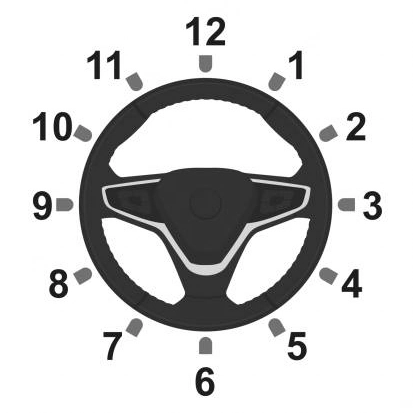Driving / Technique
Although driving is a familiar activity to many, there are fundamentals that one should learn in order to create consistent, repeatable performances.
Relax
First, one must relax one’s body and mind at all times when trying to achieve maximum performance. When driving, one should not be tense anywhere in the body, especially in one’s hands, arms, and legs, but even in one’s core.
Even under the most stressful circumstances, athletes perform their best when they are not tense and not trying to force a result.
When driving, a relaxed body feels the texture of the feedback better, moving with the feedback forces instead of suffocating them with physical tension.
As well, a relaxed body and mind allows one to fall into a flow state and drive through instinct. An instinctual driving state prevents overthinking, blocks out distractions, and unlocks one’s highest potential.
Pedals
When using any pedal, the primary point of contact is the ball of one’s foot.
All movements should be smooth; think “squeeze”, not “push”, and definitely not “kick” or “jam”. Harsh movements can upset the balance of the vehicle, and so, even fast movements like transitioning to hard braking should be done as a fast squeeze, not as a sudden kick. Thinking of pedal inputs as a “squeeze” lets one feel the force build up throughout the motion to the limit of grip, whereas a sudden kick of input creates an instant response the driver won’t feel coming.
If one locks a wheel under braking, one should think of relaxing one’s braking leg more than lifting one’s foot up off the pedal. The brake pedal especially should be thought of as a pressure input with some travel distance rather than a travel input with some associated resistance pressure.
If a vehicle has foot clutch, the driver should leave their left foot on the dead pedal when the clutch pedal is not being actively used.
Real world
When entering a vehicle, make sure the pedals and soles of one’s shoes are clean and dry.Wheel
When driving for speed, one’s hands should be placed on the wheel opposite one another at 9 and 3 o’clock.

The steering wheel should be held with a firm, but relaxed grip. One’s grip should be firm enough to prevent the wheel from pulling itself free from one’s hands, but relaxed enough that one is not suppressing the natural pulls and vibrations of the wheel that are vital to understanding the grip conditions at any given moment.
One should use only as much steering force and grip strength as is needed to move car into and out of turns. One should increase hand grip strength as steering becomes heavier when turning into a corner, and relax hand grip strength as steering lightens when coming out of a corner.
One should rotate the wheel with equal, balanced work between both hands. One hand pushes the wheel rim up, providing finesse and precision to the steering input, while the other hand pulls the wheel down, providing power as the wheel becomes heavier throughout a turn. The goal is a smooth control that is strong enough to gradually move the wheel into and out of turns without sudden jerks, while still being soft enough to feel vibrations or kickback coming through the system.
Small corrections should be made with one’s wrists, not arms. One’s arms will decide the general position of the wheel at any given moment of the steering motion, but one’s wrists will be responsible for making instinctive movements based on the finer details of feedback through the wheel.
Shifter (H-pattern)
The shift lever should be grasped with the hand shape of a Lego guy; one’s thumb on one side opposed by one’s pointer and middle fingers on the other.
Even when racing, one should not try to be fast with one’s shift inputs; missing one shift is more time lost than the time gained through haste. Instead one should “place” the lever into each gear. This action should be firm and deliberate without babying the lever; one must make sure it goes into gear every time.
One’s grip should be firm enough that the lever won’t ever slip out of one’s hand, while also avoiding a “death grip” that prevents one from feeling the lever move through its mechanism and click into place.